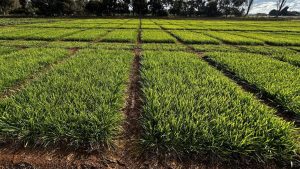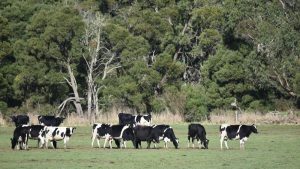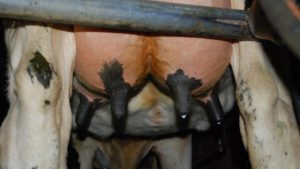
Protect Your Dairy Herd from Metabolic Diseases and Feed-Related Threats.
The arrival of lush, rapidly growing pastures in spring often signals a period of abundance for dairy farmers, yet this seemingly ideal grazing environment can harbor hidden health dangers for their herds. The article reveals that the high sugar and low fiber content of these pastures can trigger a range of serious metabolic issues. From reduced milk production to systemic illnesses, the transition to spring feed requires vigilance and strategic management to protect the health and productivity of the herd.
One of the most significant risks is ruminal acidosis, which can manifest in symptoms like a drop in milk yield, low butterfat content, and loose manure. The article also points to Sub-acute rumen acidosis (SARA) as a danger, as it can suppress the cow’s immune system, making the herd more susceptible to diseases like salmonella and mastitis. These conditions not only impact animal welfare but also present a major challenge to farm profitability, underscoring the importance of proactive animal health management.
Beyond acidosis, the article details other metabolic diseases linked to pasture content. Milk fever, or low blood calcium, is a threat to older, high-producing cows, as spring pastures are often low in calcium and high in potassium. Similarly, grass tetany, caused by a magnesium deficiency, can lead to severe neurological symptoms and even sudden death. For the dairy community, understanding these specific risks is crucial for mitigating potential herd losses and ensuring stability in milk supply.
To combat these threats, a number of proactive management strategies are recommended. The article emphasizes the importance of providing dietary buffers and offering dry hay or straw to balance the high sugar content of the pasture. Furthermore, it advises that farmers conduct pasture testing and avoid grazing hungry cows on risky pastures. These measures are essential for maintaining stable rumen function and preventing the onset of acute and chronic health issues.
For the agribusiness sector, this information serves as a critical reminder that pasture management is a key component of dairy economics. The article highlights that a well-managed grazing strategy is not just about feeding the cows, but about risk management and ensuring the long-term health and profitability of the farm. By addressing the hidden dangers in pasture, farmers can safeguard their herds, maintain high-quality milk production, and secure a more resilient future.
Source: Dairy News Australia: Hidden dangers in pasture
You can now read the most important #news on #eDairyNews #Whatsapp channels!!!
🇺🇸 eDairy News INGLÊS: https://whatsapp.com/channel/0029VaKsjzGDTkJyIN6hcP1K





















